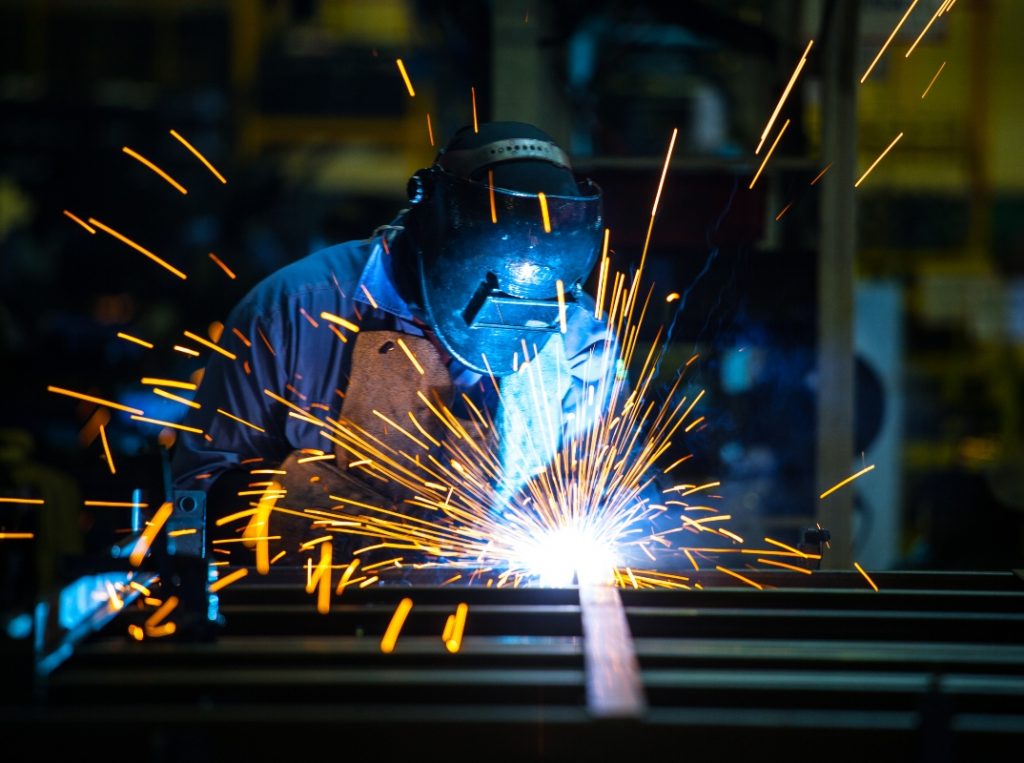Workers in an industrial environment are likely to experience accidents due to the higher risks involved. As such, management should implement workplace safety policies to minimize potential accidents and because all workers have the right to work in a safe environment.
That said, make sure to maintain the safety of your employees in these areas:
Flooring
Choose a heavy-duty kind of flooring to avoid cracking or warping over time. Keep your current and future business needs in mind to help you choose wisely among different kinds of flooring.
One of the best options is polished concrete, as it features a non-porous structure and resists peeling and light damage. A super flat concrete floor, on the other hand, features tighter tolerance and a level surface.
To enhance your concrete flooring, use an epoxy tech floor coating system to protect your flooring against high impacts and chemical spills. Epoxy coating can also help make your employees safe as it resists abrasion that can cause tripping hazards. Also, if your concrete flooring has developed cracks, make sure to use concrete patching compounds to extend its life and prevent any potential accidents.
Lighting
Upgrade to industrial LED lighting to help improve assembly operations and increase the safety of the facility. LED lighting features a sophisticated lensing system that directs light precisely where it needs to be, so there’s higher production efficiency and reduced workplace accidents.
LED flat panel lights can produce direct and indirect lights that are dimmable and help optimize a particular space. You can also opt for adjustable lighting to adapt to your space’s different lighting needs. For instance, you need brighter lighting for an assembly line that puts together various product components.
Moisture Mitigation
Accumulated moisture in an industrial space can destroy machinery and inventory. It can also cause high levels of humidity that can affect employees’ performance and disrupt the body’s cooling mechanism.
Industrial dehumidifiers can help prevent this problem by providing enough airflow throughout the area. Some important factors to consider when choosing the correct industrial dehumidifier are relative humidity, cubic footage and ceiling height, the number of employees, and how tight the building is sealed.

Hazardous Substances
Store hazardous materials safely by understanding the risks of each material, the proper regulations, and the correct storage procedures. Perform a risk assessment based on each type of substance and their risks to determine how they will be appropriately stored.
For example, the type of storage is essential for a hazardous material placed in a drum. You can’t store drums used for chemicals on a straight shelf as they can roll off. Make sure to check local and state laws and regulations from authorities like Occupational Safety and Health Administration (OSHA) when creating your risk assessment report.
Fire Hazard
Industrial plants are vulnerable to fires due to electrical systems, flammable chemicals, and heavy machinery. A large volume of people can also contribute to a potential fire. There should be an operational plan in place in case a fire starts.
Failing to have a fire prevention plan will pose a risk to your business and the safety of your employees. Make sure you have fire alarm systems, an automatic fire suppression plan, and marked exits. When employees work with electricity, consider the following:
- Have them equipped with proper training before starting a project to reduce injuries.
- Carry ladders horizontally to avoid getting tangled with power lines.
- Make sure electrical conductors are in top condition.
- Exposed machine parts should be covered appropriately.
- Avoid getting liquids near the power lines.
Industrial Ventilation
A well-designed industrial ventilation system helps prevent employee sickness by removing fumes and cleaning air contaminants. It also helps lower the risk for workplace accidents as proper air circulation reduces fire and explosion risks. To make your space healthier, choose from these common ventilation systems:
- General Industrial Ventilation: Minimizes the concentration of pollutants by expelling contaminated air and controlling the amount of heat in a hot environment.
- Natural Ventilation: It allows the entrance of clean air and eliminates hot air from machinery through openings on the sides of the building, the floor, or the ceiling.
- Exhaust Ventilation: Considered the most efficient system, it works by lowering internal air pressure and extracting indoor air through a hose to prevent workers from inhaling contaminated air.
The health and safety of employees should be one of the top concerns of any company in any industry. A healthy working environment makes your company attractive to workers, boosts employee morale, and prevents you from losing money due to sickness, injuries, and other health issues. Enhanced safety measures equate to healthier employees, so there will be fewer disruptions in your operations.



